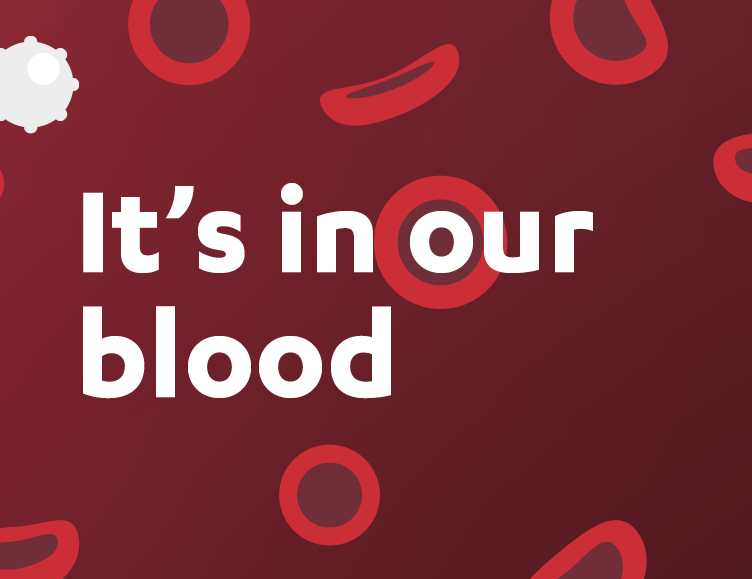Innovation & collaboration for blood cancer patients | Janssen Belgium
Innovation and cooperation: that's in our blood. At Janssen, we have been committed to blood cancer patients for many years - and we will continue to do so. The innovations we have developed have contributed to improved treatment of blood cancer. We also try to help patients cope with their disease as much as possible, in order to improve their quality of life.
Blood cancer
In Belgium, more than 7,500 patients are diagnosed with blood cancer every year 1. Close to 11% of cancer diagnoses in our country concern some form of blood cancer. Besides the high number of annual diagnoses, blood cancer also claims many lives.
Innovation
Fortunately, the prospects for blood cancer patients are improving every day thanks to innovative treatment methods. Over the years, Janssen has made multiple innovations available to these patients, varying from small molecules to antibodies, and recently also cell therapy. After all, innovation is in our blood. The use of cell and gene therapy is an important and relatively new innovative development in science. These are treatments in which cells, tissues and/or genes are introduced into the patient's body. These cells or tissues can take over the function of damaged or non-functioning cells and tissues. The genes can correct a defective gene. The aim of this innovative therapy is to alleviate patients' symptoms and improve their quality of life.
CAR-T therapy
We recently announced that our first European facility for the production of CAR-T therapy will be built in Ghent. CAR-T is a specific type of cell therapy with which we aim to improve treatment options for, among others, patients with multiple myeloma, a rare form of blood cancer. For this type of cell therapy, a patient's T-cells are isolated from their own blood and reprogrammed so that they can target and eradicate the cancer cells. CAR-T therapy is thus "tailor-made" for the individual patient. Given the increasing focus on personalised health care, cell therapy is one of the innovations of the future.
Collaboration
Our commitment to patients goes beyond developing medicines and therapies: we also strongly focus on increasing awareness and providing information about various diseases. Because helping patients is in our blood. We believe it is important to establish strong collaborations for this purpose. This year, for example, we are working together with patients to develop the Waldenström guide.
Waldenström disease is a rare form of blood cancer. Patients and their caregivers feel an important need to have easier access to currect information about the diagnosis, treatment of and living with this disease, preferably bundled in one place. That is why we have joined forces with CMP Flanders to renew the Waldenström patient guide for patients with Waldenström disease. The editorial board consists of patients with this disease and Janssen experts. The editorial board starts with a blank slate and brings together their complementary expertise, in order to make a guide that fits seamlessly with the needs of people living with this disease. We hope to be able to provide the CMP members and the hospitals with this guide in a few months! Do you want to stay informed about the launch? Follow the social media channels of Janssen Belgium and CMP Flanders.
Working together with patients is in our blood. Last year, Janssen also worked together with patients with lymphoma, one of the forms of blood cancer, on the guide 'Living with lymphoma'. This guide covers the various types of lymphoma cancer, possible treatments and dietary advice. You can also read the stories of (ex)patients and informal carers. Curious? You can find it here:Living with lymphoma (NL) & Living with lymphoma (FR).
We are also committed to empower patients with multiple myeloma by seeking powerful collaborations. To give patients a better understanding of what they can expect during treatment of this complex disease, we created a useful infographic together with doctors and nurses. With this infographic, patient and caregiver can more easily discuss bottlenecks in the treatment. A great example of how collaboration can really make a difference for both the patient and the healthcare provider!

